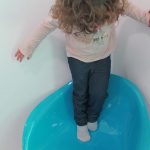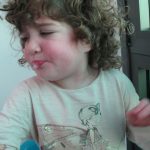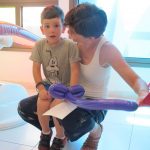TOGETHER WE FIGHT DENTAL PHOBIA
Together we fight Dental phobia
Many scared children visit our clinic. Some of them have already visited a Dentist but had no positive results. Usually these children are even more frightened and are more difficult to handle because they already have had an unpleasant or a painful experience.
The best thing to do as a parent before your child’s first visit to our clinic is to be calm and happy. Prepare the child by telling him that during his first visit to the clinic, we will check and brush his teeth and give him little toys.
Do not try to be more explanatory since you can make the child suspect that something will happen. We know the ways and methods of coping with your child’s behavior and fear.
Dental phobia is widespread and would not exist if the child started visiting the Dentist before problems with his teeth occurred. Techniques that have been developed to combat dental phobia and which we use in our clinic are:
- Say – Show – Do
- Use of a model (Parent – Sibling)
- Sensitization
- Psychological aid
- Presentation of educational DVDs
- Establishing limits – behavioral management
- Use of mild soothing
Over the years, the main cause of dental phobia in children was the injection, the needle! In our department we have all the modern techniques of painless anesthesia that help the child have a better experience at the clinic so that he is not afraid to come back again. Let us not forget that most dental problems arise from avoiding a visit to the Dentist due to dental phobia.
It is part of our profession to recognize the reasons that cause your child’s concern and fear for the dentist and to deal with his behavior. Most children are easily acquainted with the dentist only by using simple methods of coping with their behavior. Others need more time and effort and more complicated methods of coping with their behavior.
However, if for any reason your child has inappropriate behavior that we cannot handle, we inform you and we suggest alternative methods of providing dental care, such as the use of soothing medications or general anesthesia.
Find out more on www.cspd.com.cy
CONTEMPORARY TECHNIQUES ON DENTAL ANESTHESIA
Over the years, the main cause of dental phobia in children was the injection, the needle! In our department we have all the modern techniques of painless anesthesia that help the child have a better experience at the clinic so that he is not afraid to come back again. Let us not forget that most dental problems arise from avoiding a visit to the Dentist due to dental phobia.
In our clinic we use the STA and Easy Sleeper systems, which only numbs the teeth without giving a tingling sensation to the tongue, cheeks or lips, so this way the child is not at risk of biting himself and can eat right away. In addition, the child does not have the heavy feeling of numbness.
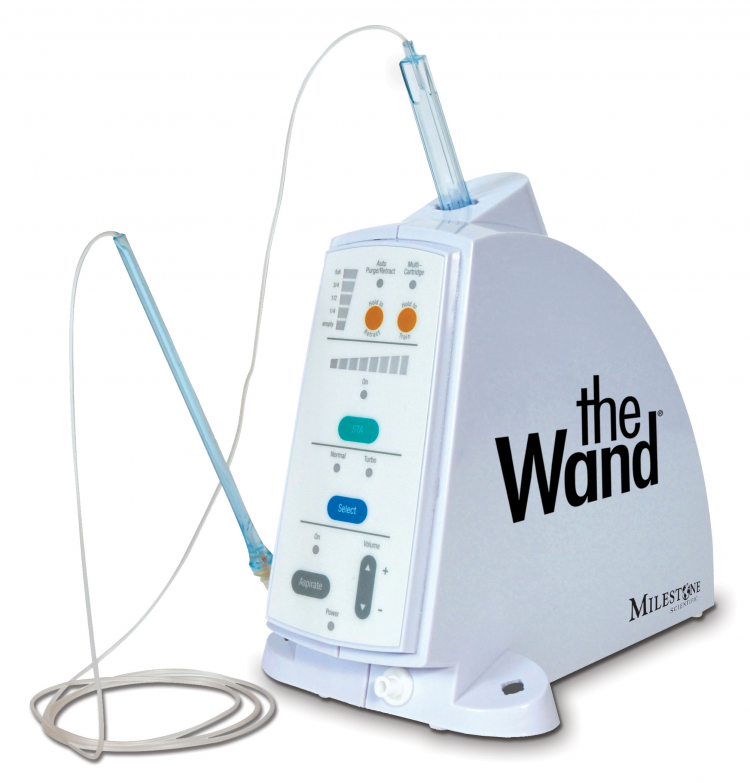
Use of Nitrous Oxide mask
Nitrous Oxide is a safe gas with a pleasant odor that soothes the child and makes them feel happy during their dental treatment. It contains nitrous oxide and oxygen and is used as a sedative and mild soother.
Throughout the use of the Nitrous Oxide mask, your child keeps all his senses and reflexes, has his eyes open and is able to communicate with the Dentist.
Nitrous Oxide does not cause any addiction. The gas is delivered through the nasal canal with a special mask that is placed on the nose and acts within about 5 minutes. Its action stops as soon as the flow of gas is ceased.
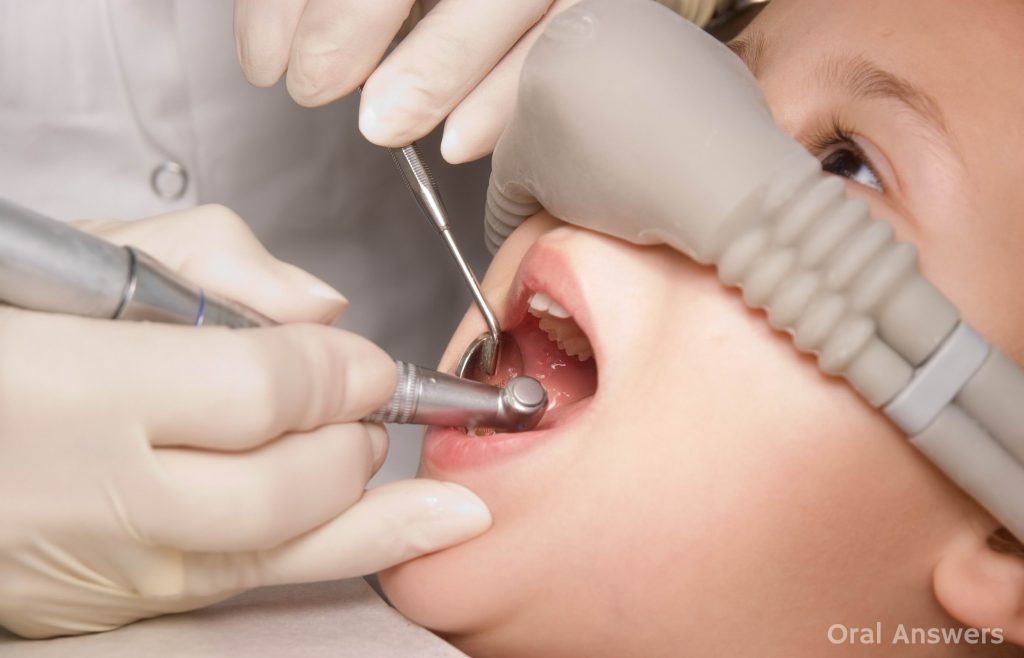 Nitrous Oxide is effective in most cases, but sometimes is not as effective. It is difficult for the Nitrous Oxide mask to be effective in very young children (2-3 years old), claustrophobic children, children with nasal problems or children with negative behavior. In these cases we may choose other methods to help children cooperate in the Dental environment.
Nitrous Oxide is effective in most cases, but sometimes is not as effective. It is difficult for the Nitrous Oxide mask to be effective in very young children (2-3 years old), claustrophobic children, children with nasal problems or children with negative behavior. In these cases we may choose other methods to help children cooperate in the Dental environment.
General Anesthesia for Dental treatment
There are some cases that require the use of general anesthesia for Dental treatment. General anesthesia is done in an operative room in a private clinic.
Treatment of children using general anesthesia is done frequently and applies mainly to children who require an extensive amount of dental treatment to be done. It also mainly applies to children who do not cooperate in the Dental environment. Children with special needs and very young children aged 2-5 are the usual candidates where general anesthesia is applied. However, older children experiencing excessive dental phobia or hyperactivity are also candidates for treatment with general anesthesia.
Treatment of children under the influence of general anesthesia is a safe technique as it is provided by a professional anesthesiologist, in a fully equipped surgical room.
In dental surgeries the child enters the clinic early in the morning and usually departs in the afternoon. There is no reason for overnight stays.
With the use of the above technical behaviors and painless anesthesia, we can treat the vast majority of children without or having minor behavioral problems in the dental chair.

